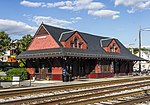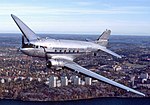Lovettsville Historic District

Lovettsville Historic District is a national historic district located at Lovettsville, Loudoun County, Virginia. It contains 174 contributing buildings, 5 contributing sites, and 2 contributing structures in a primarily residential section of Lovettsville. Most contributing resources consist of residences and associated outbuildings dating from the early-19th to early-20th centuries. They are vernacular interpretations of a variety of popular architectural styles including Federal, Queen Anne, Italianate, Romanesque, and Bungalow. Notable resources include the Lovettsville Union Cemetery, First German Reformed Church site and cemetery, New Jerusalem Lutheran Church (1869, 1903) and cemetery, Union Cemetery, African-American Methodist Episcopal Church (c. 1870) and cemetery, Presbyterian cemetery, Lovettsville Masonic Lodge (1869, 1923), former Grubbs Store (c. 1870), former Red Men's Lodge (1923), and Willard Hall (c. 1820).It was listed on the National Register of Historic Places in 2012.
Excerpt from the Wikipedia article Lovettsville Historic District (License: CC BY-SA 3.0, Authors, Images).Lovettsville Historic District
East Broad Way,
Geographical coordinates (GPS) Address Nearby Places Show on map
Geographical coordinates (GPS)
| Latitude | Longitude |
|---|---|
| N 39.272777777778 ° | E -77.636666666667 ° |
Address
East Broad Way 17
20180
Virginia, United States
Open on Google Maps





